Maguey...the Spiritual Plant of the Gods or the Devil's Brew?
- TLALOCO
- Jun 20, 2020
- 8 min read
The origins of tequila in Mexico date back before the Spaniards arrived in the 1500s to around 250-300 A.D. when the Aztec Indians first fermented the juice of the Maguey (Agave) plant to produce their ceremonial beverage called, “Octli,” in Nahuatl, which later came to be called Pulque. Archaeological evidence suggests that the agave plant was already important in the lives and culture of indigenous Raza in the regions of Mexico.
Agave plants – maguey —have a sweet sap in their center. This sap is called aguamiel, “water honey.” However, when it is fermented, then it becomes a rich, alcoholic drink called “pulque.” Pulque is a great source of protein, probiotics, minerals like iron, amino acids, and vitamins C, D, and E. For this reason, pulque were often served as medicine in pre-colonial Americas.
To extract the sap, a cavity is cut into the heart of an 8 to 12-year-old plant. The sap is then extracted with a fat wooden tube placed in the heart of the plant.
The sap or agave nectar is then fermented to make pulque. The resulting liquid is milky and slightly sour tasting. Sometimes fruit or nuts are added to change the flavor.
Pulque's alcohol content, dependent on the degree of fermentation, ranges from 2 to 8%. Unlike tequila or mezcal, the ancient ancestor, pulque, is not a distilled liquor.
The fermentation process makes it technically a wine—not a spirit. Its consumption was restricted and only priests, nobles and the elderly were allowed to drink it.
But that changed during colonial times, pulque was widely consumed and became an important source of revenue for the government.
In colonial times, haciendas producing pulque were an important part of the economy and remained so during the first century of Mexico's independence.
A popular culture grew up around pulquerías – bar restaurants – which were almost exclusively frequented by men.
However, pulque has found a resurgence in modern Mexico, popular with youth and trendy bars called Curados. Pulque is a popular drink for college students; as a naturally fermented drink, its place in Mexican culture, and for its inexpensive price.
Another Maguey creation is Mezcal. Mezcal is like tequila: both are made from agave, both are old spirits originating in Mexico, and both vary from bitter, hot, to smooth and pungent. However, there are also enough differences to earn each its own unique category.
While tequila is traditionally only made in Jalisco, mezcal is usually made around the city of Oaxaca (though both, with permission from the government, have been made and produced in other places). Another difference is in the cooking process. To distill tequila, the agave piñas are roasted in clay ovens above ground. The piñas usually cook for a number of days before finally being shredded and rolled for their sugar-rich juices.
Making mezcal is much more complicated. Wood is burned in deep pits for a 24 hour period. The piñas are placed on hot rocks at the bottom of the pit, and then covered with moist agave fibers to roast for 2-3 days. Finally the piñas are crushed and juiced.
Another important difference is the agave choice used in mezcal. Mezcal can be made from a blend of one of 250 types of the cactus-like succulents. Agave Espadin is the most common and is widely cultivated, but other types of agave, including some varieties of wild agave, are also used. Mezcal must have at least 80% agave sugars, and it must be bottled in Mexico. Mezcal's blend of agave plants, allows distillers to experiment with new flavors and tastes.
But these Agave juices are not the same. Sort of like the difference between scotch and whiskey. All tequila is mezcal, but not all mezcal are tequila. Oh…and one more difference. Only Mezcal can have the worm!
The worm itself is actually a moth-larva called a gusano de maguey — since it feeds off of the maguey plant. Some think the worm in the bottle started as a marketing ploy, to get people to drink more mezcal in the 1940s and 1950s.
Rumors persist that a distiller named Jacobo Lozano Páez, who in 1940, found that the larvae changed the taste of the agave. Others believe that it brings good fortune and strength to the lucky person who finds it in his or her glass.
The gusano serves as evidence of a mezcal's potency; to pickle the gusano, the spirit must have a high percentage of alcohol.
PuroChisme, rolls with the marketing theory…tu sabes, the feria ese! But after a few shots of mezcal pues, we do feel muy chingon!
Mezcal used to be thought of as a poor man's drink and was made in all sorts of conditions, resulting in varied quality. In 1994, the government applied the law of Appellation of Origin to the production of mezcal, limiting the area where it could be produced to regions in the states of Oaxaca, Guerrero, Durango, San Luis Potosí and Zacatecas.
The most popular juice coming from the Maguey plant is Tequila. In 1977, the Mexican government had issued a law that determined that a drink could only be labeled tequila if it was produced in a particular area of Mexico — in the state of Jalisco and a few municipalities in the nearby states of Guanajuato, Michoacán, Nayarit, and Tamaulipas. And, that the tequila was only made from the Agave Tequilana Weber. A plant commonly known as "blue agave."
The production process for tequila is strictly regulated. By law: tequila can only be labeled and sold by that name if blue agave constitutes over half of the fermented sugars in the drink. Premium tequilas are made with 100% blue agave and labeled as such, but lower quality tequila may include up to 49% cane alcohol or brown sugar alcohol, in which case it is labeled "mixto." The regulatory council allows these lower quality tequilas to be exported in barrels and bottled abroad. Premium tequilas, on the other hand, must be bottled within Mexico.
Tequila, as we know it, was actually introduced by the Spanish Conquistadors in the 1500s. However, it took a man named Don Jose Antonio de Cuervo to immortalize this drink and turn it into what has become one of the most popular spirits in the world.
In 1758 Don Jose Antonio de Cuervo, a Mexican Colonist from Spain, was awarded a land grant by Spanish King Ferdinand VI for a tract of land in the town of Tequila, Jalisco.
It was here that he founded the Taberna de Cuervo where he farmed agave, the fleshy, spiked plants growing native in the region.
Jalisco, is a State of the Mexican Republic, on the West coast of the country. It is famous for being the birthplace of Mexican icons such as mariachi, tequila and charrería. This is why it is said that "Jalisco is Mexico." Ok, pero PuroChisme believes el alma de Mexico esta en Guanajuato, porque es la cuna de la revolución y donde nació Jose Alfredo Jimenez!
Ok, pues, back to our story. In 1795 Don Jose's son, Jose Maria Guadalupe de Cuervo was granted permission to distill the agave plants and, in that year, the first drops of Mezcal de Tequila de Jose Cuervo flowed from the stills. This was the first instance of commercial tequila development, and the birth of the tequila industry!
The Cuervo spirit quickly gained popularity and sold throughout Mexico and the southwest. In 1880 the Cuervo family became the first to individually bottle their tequila, while others chose to sell it in large wooden barrels. In contrast, the Cuervo family decided their tequila would be easier to transport and sell if it was in smaller bottles.
Because of this strategy they began to export to the United States far earlier than other brands in the late 1800s. And exporting to the US was something they continued doing in the 20th century.
They especially increased their popularity during prohibition here in the US, as bootleggers were more than happy to smuggle it across the border to sell to thirsty Gringos.
PuroChisme has compiled a short list of our most cherished and popular Tequila’s that most people use for margaritas or for shots with salt y limon. Most brands come in Plata o Blanco (stainless steel, not barreled), reposado (barreled) and anejo (barrel, aged longer) varietals. See if your favorites are on this list:
Jose Cuervo Tequila, accounts for over 35% of market share of tequila in the world, and almost 34% in the United States alone. It's been referenced in songs, movies, books, even artwork! The name “Jose Cuervo” is more than just a Tequila brand, it is a part of the popular history of the US and Mexico.
Cazadores Tequila, from the world-famous Bacardí brand, is a tequila produced in Mexico with agave from the Highlands of Jalisco where the best agave fields are said to be grown. Cazadores is one of the oldest and most recognized tequila brands.
Herradura (The horseshoe) has become one of the most respected tequila brands in the world. It is now sold in 163 countries around the globe. Another one of its brands, El Jimador, is the most popular tequila in Mexico itself.
The following short list of Premium Tequilas are meant only for sipping, and savoring...NOT for shots-with-the-homies! Use the proper sifter glass and warm the blue agave drink with only the warmth of your mano to bring out its flavors. PuroChisme recommends enjoying a cigar, and a warm conversation with someone special when sipping these selections.
Tres Generaciones rich tradition began in 1873, in the agave fields of Tequila, Mexico, when Don Cenobio Sauza acquired La Antigua Cruz distillery––one of the oldest distilleries in Tequila, Jalisco––which is now known as La Perseverancia.
Don Cenobio envisioned creating a tequila that had a rightful place next to prestigious European drinks.
Made from 100% blue agave, Tres Generaciones offers three selections which are all triple distilled.
Patrón Tequila is defined by its mad pursuit for quality. Using only Blue Agave from the highlands of Jalisco, the tahona wheel is used to crush the baked agave and extract its juices. They also ferment the juice with fiber from the agave itself, adding a bit more complexity to the spirit.
Each small batch of this tequila is handmade and very tasty. Over 60 hands will touch the hand-blown glass bottle of tequila before it's packaged for export to the United States - each one inspecting the bottle as it passes.
In all, Patron has three different lines of tequila. They make the popular Silver, Reposado and Anejo Patron that most are familiar with, as well as, a Roca Patron and the ultra-premium Gran Patrón line…which most of us only dream of tasting. Porque es mucho dinero!
Don Julio Tequila is one of the best tequilas made. From humble beginnings, Don Julio Estrada turned this spirit into something known for refinement when, at the time, it was the drink of the working man. Today, his legacy continues in two amazing tequilas….Don Julio 1942 and Don Julio Real.
The 1942, named after the year that Don Julio Estrada began distilling tequila for the first time (at the ripe old age of 17), has tastes of vanilla, caramel, and spice.
It is smooth and silky with an extraordinary clean finish. It comes in a beautiful, tall bottle, and elegant wooden box.
Both tequilas are made from hand selected Blue Weber Agave plants grown in the highlands of Jalisco, Mexico. The pinas are slow cooked in brick ovens, Don Julio then double distills both selections.
The tequilas are then aged in American Oak Barrels. However, this is where they distinguish themselves….. Don Julio 1942 is aged for 30 months while the Real is aged for 5 years!
Jose Cuervo - Reserva de la Familia Extra Anejo. Introduced in 1995, the Reserva de la Familia was one of the first, high-end tequilas on the market. It is made with 100% blue weber agave tequila, which shouldn't be surprising. However, even within the Blue Weber Agave plant, there are variances. The center, or heart of the pina, is reportedly the juiciest, containing the most flavorful nectar in the plant. This is the only part they use for the Reserva de la Familia tequila.
But it doesn't stop there. Because it's classified as an "extra" anejo, it's aged for at least two years in oak barrels. But the Reserva de la Familia is also an exquisite blend.
That means that the youngest tequila used in the blend is two years old. According to Jose Cuervo, the balance of the tequilas used to finish this spirit include some tequilas aged up to 30 years enhancing its velvet, rich, smooth finish.
Served "neat" in a fluted glass or a snifter and then warmed with the hand, the tequila releases notes of oak, almond and cinnamon. The tequila comes in a beautiful, hand-numbered bottle in an equally exquisite presentation box. Each box is a work of art and every year they are made differently. Simon, we admit it...this is PuroChisme's favorite Tequila...so what's yours?
The Maguey Plant, whether made as Pulque, Mezcal or Premium Tequila, has been a blessing and a curse throughout Raza history. We know in any form the Agave plants healing ways won't solve all our problems...But isn't it worth a shot...or two?



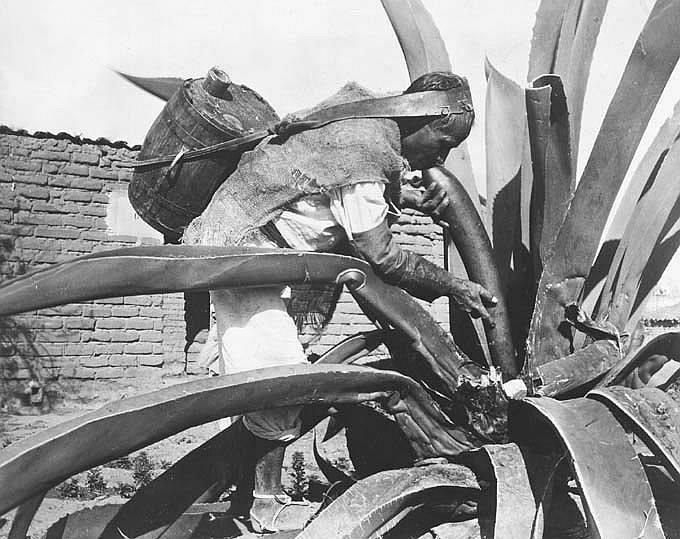









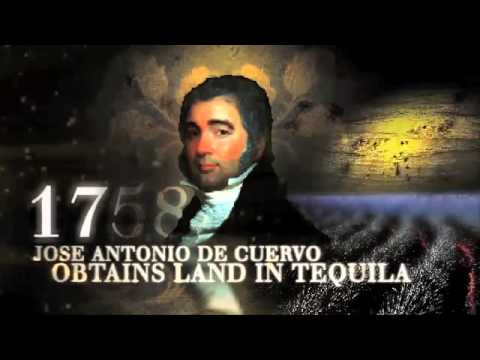



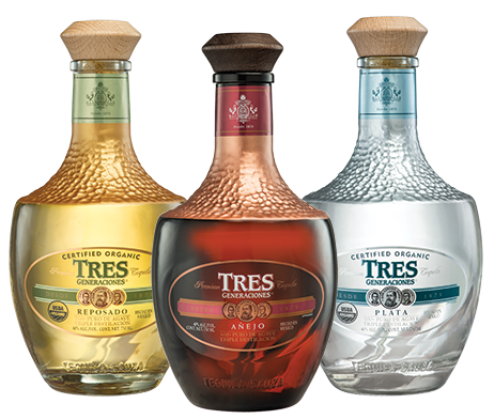

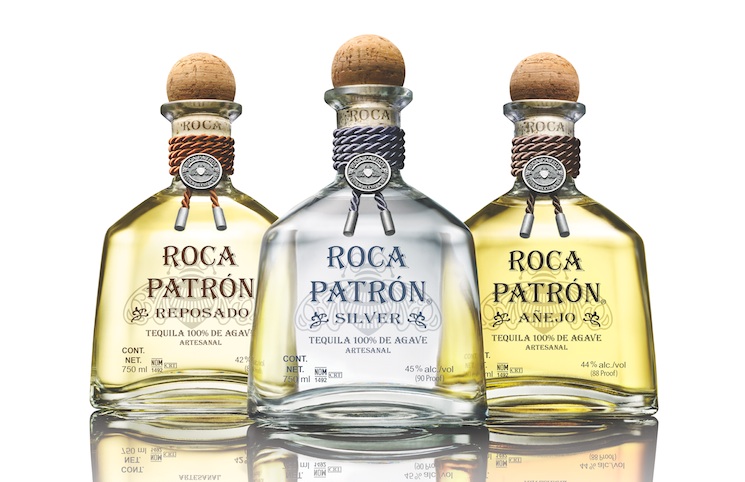

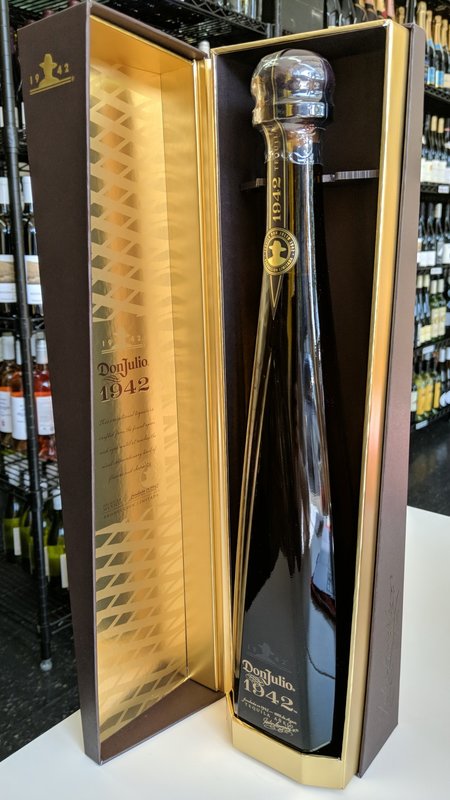




The process of making tequila in Mexico dates back to ancient times, even before the arrival of the Spaniards in the 16th century. By the way, we could make a cool video about this. A free tool video trimmer can help you with this. It's just convenient and effective.